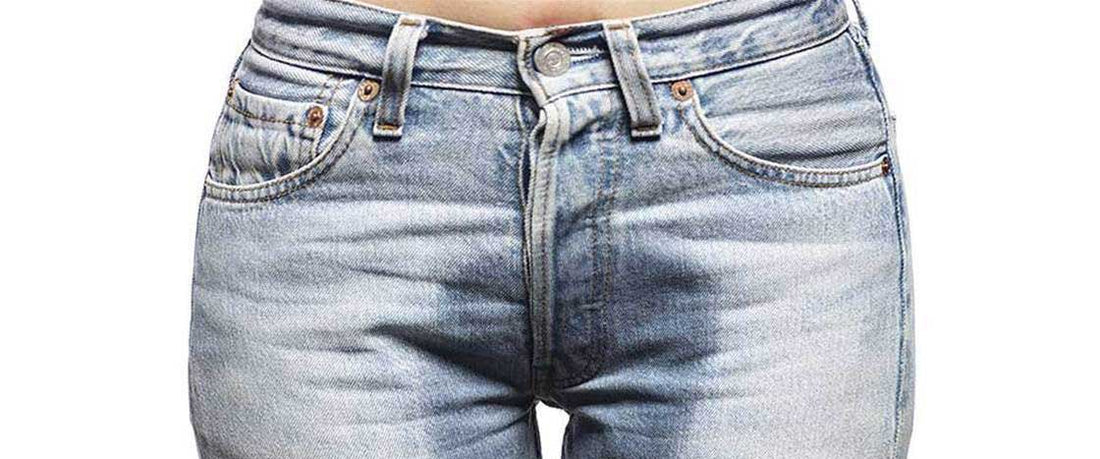
Can Incontinence be Cured?
WHAT IS INCONTINENCE?
Incontinence is a term used to describe any accidental or involuntary loss of urine from the bladder or bowel motion, feces, or wind from the bowel. The condition ranges in severity from minor involuntary leaks to complete loss of bladder or bowel control. Women in general experience incontinence more often than men. It also becomes more common as people get older. There are two distinct categories of incontinence, urinary incontinence and bowel incontinence. Read more about the types and causes of incontinence here.
QUICK LINKS - TOPICS COVERED:
CAN INCONTINENCE BE CURED?
Overall, incontinence treatments today have promising results. Most cases can be improved and some even cured. However, curing incontinence depends on a number of variables. Firstly, it depends on the type of incontinence you have. Secondly, the cause of incontinence can influence whether or not it can be cured. Other factors specific to the type of incontinence also may play a role.
IDENTIFYING THE TYPE OF INCONTINENCE
When treating incontinence, obtaining the best possible results starts with getting the right diagnosis. Your symptoms often can tell your doctor which type you have. And only with the right diagnosis will your doctor be able to provide appropriate advice.
Start by visiting your primary physician. Based on their initial evaluation, they may refer your condition to a urologist. The doctor will likely start with a thorough medical history and physical exam. After that they might ask you to do simple maneuvers that can trigger incontinence.
After the preliminary announcement, your doctor may recommend one or more of the following assessments:
- Urianalysis –A sample of your urine is checked for signs of infection, traces of blood or other abnormalities
- Bladder Diary – Your doctor may ask you to keep a log of your liquid intake, when you urinate, the amount of urine your produce, whether you had an urge to urinate, and the number of incontinence episodes.
- Post-Void Residual Measurement –A procedure where you’re asked to urinate into a container that measures urine output. The doctor then checks the amount of leftover urine in your bladder using a catheter or ultrasound test.
- Others – Doctors may recommend further tests such as urodynamic testing and pelvic ultrasound, if further information is needed. This is especially so if you’re considering surgery.
TREATMENTS
When it comes to treating urinary incontinence, there are a number of options, including surgical and non-surgical. However, the specific treatment that is suitable to a patient depends both the type of incontinence and the doctor’s recommendation.
Non-Surgical Treatments
Behavioral Techniques
Behavioral techniques are meant to train your body from being incontinent. Such methods include:
- Bladder Training –meant to delay urination after you get the urge to go. Initially you might be asked to hold off from going to the toilet for 10 minutes after you get the urge to go. Ultimately you train your bladder enough to lengthen the duration between bathroom trips anywhere between 2.5 and 3 hours.
- Double Voiding – what this does is it helps you to empty your bladder more completely and avoid overflow incontinence. With this technique, you first urinate then wait for a few minutes and trying a second time.
- Schedules Toilet Trips – instead of waiting for the urge to go, simply use the toilet at scheduled intervals. For example, your doctor might suggest that you urinate every 2 to 4 hours.
- Fluid and food intake management – you may be advised to cut back or avoid the consumption of alcohol, caffeine, or acidic foods. Reducing liquid consumption, losing weight, or increasing physical activity can also help.
Pelvic Floor Muscle Exercise
Also known as Kegels, these exercises are a simple way to strengthen your pelvic floor muscles, which control the flow of urine as you urinate. The muscles surround the bladder and urethra. If the muscles are weak or damaged—which can happen due to pregnancy and labor or aging—these exercises are highly recommended, especially for stress or urge incontinence.

To get an idea of how to do pelvic floor muscle exercises, here are the basic steps:
- Imagine that you’re trying to stop your urine flow
- Tighten the muscles that you would use to stop urinating and hold for a few seconds, then relax for a few seconds
- You may start with just 2 seconds, but over time, you should be able to build up to 10 seconds at a time.
- Aim to do 3 sets of 10 repetitions per day.
In order to identify and contract the right muscles, your doctor may recommend working with a physical therapist or put you on a program for pelvic floor muscle training. They will be able to assess how far you’re able to squeeze. It’s recommended to do these exercises for at least 3 months and possibly continue thereafter.
Electrical Stimulation
In this type of treatment, electrodes are temporarily inserted into a person’s vagina or rectum. Gentle electrical currents then pass through, thereby stimulating the pelvic floor muscles. Particularly useful for stress and urge incontinence, electrical stimulation strengthens the pelvic floor muscles over several sessions of treatment.
Another type of electrical stimulation, known as nerve stimulation is can also help incontinence by stimulating the bladder and controlling the urge to pee. However, it is not used to treat stress incontinence.
- Sacral Nerve Stimulation – a device similar to a pacemaker is implanted under your skin in the lower back area where the sacral nerve is to deliver gentle electrical pulses. The electrical impulses block messages from the bladder to the brain that you need to go. They can also increase blood flow to the bladder and strengthen the pelvic floor muscles. The procedure is performed under sedation
- Tibial Nerve Stimulation – a stimulator sends electrical stimulation to your spine and triggers the tibial nerve, located at your ankle, which controls the bladder. The procedure does not require sedation and an office procedure.
Medications
There are several types of medications available to treat incontinence. Most of them work to relax the bladder and calm spasms. Usually medication is used in combination with other techniques or exercises.

Common types of medication include:
- Anticholinergics/Antimuscarinics –prevent bladder spasms by relaxing the muscles and approved for overactive bladder in women. Examples include, Oxytrol, Detrol, Ditropan XL, and Urispas. Some of these are available without a prescription. Especially used to treat urge incontinence.
- Botox – injected into the bladder can relax the muscle and its storage capacity, reducing urinary incontinence. Used in situations where the patient can’t use or doesn’t respond to the medication.
- Topical Estrogen – for women, comes in the form of cream or a vaginal ring that helps swell the area around the urethra to guard against leaking. Helps with various types of urinary incontinence. Systemic estrogen, or estrogen pills, aren’t recommended as it can worsen incontinence.
- Alpha Blockers – for men with urge or overflow incontinence, these medications relax the bladder neck muscles and muscles in the prostate, making it easier to empty the bladder. Some brands are, Flomax, Uroxatral, Rapaflo, and Cardura.
- Mirabegron (Myrbetriq) – relaxes the bladder and can increase the amount of urine the bladder can hold at a time, allowing you to empty your bladder more completely. Used to treat urge incontinence.
- Pseudoephedrine – can help tone up the urethra with stress incontinence.
Medical Devices
There are some medical devices that are designed specifically for women to manage incontinence. They include:
- Urethral Insert – a small, tampon-like disposable device inserted into the urethra before specific activities that can trigger incontinence. The insert acts as a plug to prevent leakage and has to be removed before urination.
- Pessary – a stiff ring that is inserted into the vagina and worn all day. Helps hold up the bladder, which lies near the vagina, to prevent urine leakage. Usually used in someone who has a prolapse that is causing the incontinence.
Bulking Material Injections
In this treatment method, a synthetic material is injected into the tissue surrounding the urethra. Used only for stress incontinence, the bulking material then help keep the urethra closed and reduce urine leakage. The filler material used is usually carbon beads or collagen. It should be noted that the fillers can go away over time and the procedure would have to be repeated regularly.
Surgical Treatments
Doctors normally recommend surgical treatments if the non-surgical methods don’t work effectively. Below are the common types of surgical treatments used to treat incontinence.
Sling Procedure
A pelvic sling is created around the urethra and the area of thickened muscle where the bladder connects to the urethra. The sling helps keep the urethra closed, especially when coughing or sneezing. Used to treat stress incontinence, strips of your body’s tissue, synthetic material, or mesh is used in the procedure.
Bladder Neck Suspension
The procedure is meant to provide support to the urethra and bladder neck, where the bladder connects to the urethra. The doctor will conduct the procedure under general or spinal anesthesia as it involves an abdominal incision.
Prolapse Surgery
Recommended for women, the surgery usually includes a combination of the sling procedure and prolapse surgery.
Artificial Urinary Sphincter
Recommended for men, where a small, fluid-filled ring is implanted around the bladder neck to keep the urinary sphincter shut until the person is ready to urinate. To urinate, you press a valve implanted under your skin that causes the ring to deflate and allows urine from your bladder to flow.



